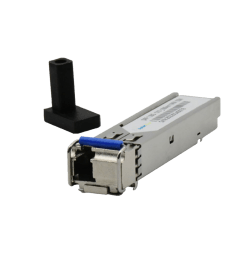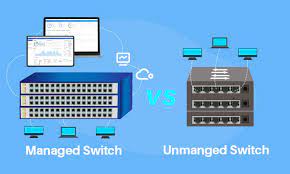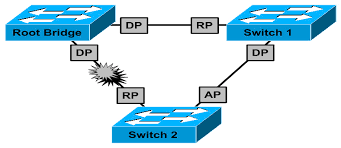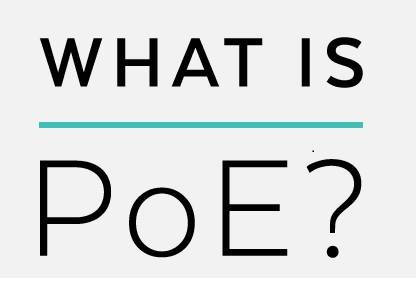What is sfp or optical module?
A fiber optic transceiver is a module that transmits and receives information through a fiber optic cable instead of a power wire. The medium used to transmit signals from one end to another is a light beam, often referred to as a laser beam. Conversely, an electric wire uses electric current as a medium to transmit signals. Fiber optic communications have completely changed the landscape of the networking world. It has enabled high-speed networks and efficient and reliable data transmission. All fiber optic networks use optical transceivers, which are hot-swappable modules attached to communication equipment. A variety of optical receivers have been developed and are currently used in various networks around the world. This article provides insight into the different types of optical receivers, the applications that can use the optical receivers, and also explains how CBO-IT optical receivers can be used with communications equipment from several original equipment manufacturers (OEMs). Gives. Let’s start with a deep understanding of the basics of an optical transceiver.
What is a fiber optic module?
As mentioned earlier, an optical receiver is an interface module used to connect fiber optic cable to communication equipment. An optical transceiver uses a hot-swappable design so that it can be plugged in and unplugged from the communications equipment without powering it down. Figure 1 shows a basic block diagram of an optical transceiver that illustrates its operation. An optical transceiver has a transceiver that houses the module to enable two-way communication. Similarly, on the other side, a similar transceiver is installed, which completes the communication cycle. An optical transceiver also houses the light source. For very precise optical transmitters, the light source is a laser beam. Laser beams offer very little dispersion, so they are useful for communication over single fiber optic cables. On the other hand, the LED light source is used for communication on multimode fiber optic cables because the multimode fiber optic cable can tolerate scattered light. The wavelength used for fiber optic communication is between 850 nm and 1550 nm. In the next section, we will discuss the various form factors available in optical transceivers.
What types of optical transceivers are available?
There are many types of optical receivers available in the market. Optical transmitters can be classified based on many factors, including:
Shape (physical dimensions)
Bandwidth (100 Mbps, 1 Gbps, 10 Gbps, 40 Gbps, 100 Gbps, etc.)
Usable networks (Fiber Channel, Ethernet, InfiniBand, etc.)
Let us study the classification of optical transmitters based on form factor. Optical transmitters are available in major models:
Gigabit interface converter, commonly called GBIC.
Small form factor pluggable, commonly referred to as SFP.
Pluggable Quad Small Form-Factor, commonly referred to as QSFP.
C Form-Factor Pluggable, commonly referred to as CFP.
Gigabit Interface Converter (GBIC)
The GBIC transceiver was first introduced and standardized in 1990 by the Small Form-Factor Committee (SFF Committee). The main reason for the development of such a transceiver was the possibility of using optical fiber cables to connect two or more communication devices and create more bandwidth and direct communication over a greater distance. A GBIC transceiver typically provides up to 1Gbps of bidirectional bandwidth over a single link, although speeds up to 2.5Gbps have been tested.
GBIC transceiver usually uses SC connector to terminate fiber optic cable. Transceivers are also available for 1000BASE-T to terminate twisted pair copper cables. One of the main features of the GBIC is that it is hot-swappable, that is, there is no need to turn off the communication equipment to insert or remove the GBIC. This allows the communication network to be always on despite new links being added to it.
Figure 1 shows a typical GBIC transceiver. The dimensions of the GBIC transceiver as defined by the SFF standard document are 57.15mm x 12.01mm x 30.48mm (L x H x W). The GBIC gap in communication equipment is also designed considering the mentioned dimensions.
Small Form Factor (SFP)
The SFP transceiver was the next step in the development of fiber optic receivers, it was also developed as a standard by the SFF committee in 2001. The SFP transceiver is much smaller in size compared to its predecessor. The size of the SFP slot in communication equipment is somewhat comparable to that of a conventional electrical Ethernet port. The dimensions given in the standard document of the SFF committee are given in Table 1.
| parameter | amount |
| Transceiver Width, Front | 13.7 mm |
| Transceiver Height, Front | 8.6 mm |
| Transceiver Width, Rear | 13.4 mm |
| Transceiver Height, Rear | 8.5 mm |
| Transceiver Overall Length | 56.5 mm |
It should be noted that SFP usage types have been developed to support higher bandwidth using a similar form factor. SFP+ is a transceiver that supports 10Gbps duplex links, similarly QSFP+ supports up to 40Gbps links with a slightly larger size than SFP and SFP+.
Quad Small Form-Factor Pluggable (QSFP)
QSFP+ (Quad Small Form-Factor Pluggable) transceivers are the most widely used 40 Gbps Ethernet transceivers. Originally the QSFP standard was developed to support 4 x 1 Gbps channels on a single transceiver, and later the technology was introduced to allow 4 x 10 Gbps channels to provide 40 Gbps link capacity. QSFP+ transceivers are compact and provide excellent support for long distance links. Figure 1 shows a 40 Gbps QSFP+ transceiver. QSFP+ transceivers can also support Fiber Channel and Infiniband traffic. QSFP+ transceivers are widely deployed in data centers to transport 40 Gbps Ethernet, 10G Fiber Channel or Infiniband QDR traffic.
Leading OEMs such as Cisco, HP, and Juniper have a wide range of networking equipment that supports 40 Gbps Ethernet transceivers and QSFP+ transceivers.
C Form-Factor Pluggable (CFP)
To meet the ever-increasing demand for higher-speed communications, engineers worked on developing a transceiver that could support 100 Gbps and higher bandwidth. In 2009, CFP MSA came out with a new transceiver standard called CFP, which can support 100 Gbps traffic. Figure 3 shows a CFP module with
A CFP transceiver supports link lengths of up to 10 km on single-mode fiber optic cable and up to 150 m on laser-optimized multimode fiber optic cable.
A variety of CFP transceivers have also been developed as standards, with CFP2 supporting up to 200Gbps with a smaller form factor and CFP4 supporting up to 100Gbps with the same form factor as SFP transceivers.
In what applications can the optical transceiver be used?
Optical transceivers are used for a large number of networks and are usually protocol independent. Optical transmitters are physical layer devices and their purpose is only to send and receive data in the form of optical pulses. These light pulses are then converted into bits and presented to the communication equipment. The main applications of photoreceptors are:
Ethernet
Fiber Channel
InfiniBand
SDH/SONET
Ethernet is the most widely used network technology. Almost every data network uses Ethernet as its core technology. Another widely used technology is Fiber Channel, which is primarily used for storage networks. Fiber Channel uses custom optical transceivers to support the Fiber Channel protocol and speeds that differ from Ethernet standards. For example, Ethernet optical transmitters are available with bandwidths of 1 Gbps, 10 Gbps, 40 Gbps, and 100 Gbps, while Fiber Channel optical transmitters are available at 4 Gbps, 8 Gbps per second, 16 Gbps, 32 Gbps etc. are available. InfiniBand optical transceivers are also used in certain networks that use the InfiniBand protocol. QSFP optical transceivers support InfiniBand. Other less commonly used receivers are SDH/SONET optical transmitters used in active optical networks. These enable faster communication over fiber optic cables in a large-scale network that can be spread over a large physical and geographical area. SDH/SONET also enables multi-protocol transmission.
Is the Eriont fiber optic module compatible with other brands on the market?
Optical modules of standards-based equipment with form factor, pin configurations and other electrical and optical parameters are exactly the same for each manufacturer. It is not necessary to use the equipment manufacturer’s optical module with the equipment, but any standard optical transmitter can be used. Eriont optical transmitters offer a wide range of choices and are fully standards-based, so it can be used with almost any standard-compliant equipment manufacturer. Leading vendors supported by Everiont optical modules include:










